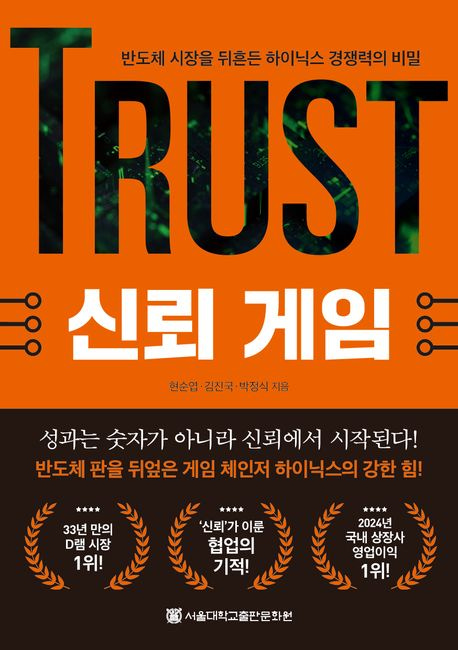How did SK hynix beat Samsung?
The reason they were able to push HBM forward
SK hynix has overtaken Samsung to claim the No.1 position in the global memory semiconductor market. Once on the brink of bankruptcy, Hynix has now surpassed Samsung, which had held the top spot for 33 years. Behind this dramatic reversal lies not just technology, but a deeper foundation of “organizational culture” and “trust.”
Today’s discussion is based on the book The Trust Game, written by former presidents and vice presidents of SK hynix.
SK hynix’s performance in the second quarter of 2025 clearly demonstrates its growth. While Samsung Electronics posted a total operating profit of 4.6 trillion KRW, SK hynix, with its focus on the memory business, recorded an operating profit of 9 trillion KRW. In the DRAM market as well, the tables have turned, with Samsung holding a 34% share compared to SK hynix’s 36%.
In particular, in the high-value HBM (High Bandwidth Memory) segment, SK hynix commands over 70% of the market and has exclusively secured the trust of NVIDIA, the world’s largest AI company. Samsung, on the other hand, has yet to pass NVIDIA’s quality certification (qualification).
Just looking at the current results, SK hynix may appear to be a long-standing leader, but only a little over ten years ago, the situation was quite the opposite. Facing a bankruptcy crisis in 2000, a workout program in 2001, and eventually being acquired by the SK Group in 2011, Hynix’s very survival was uncertain. At that time, Samsung was the world’s No.1 semiconductor company, holding a gap of more than 20 percentage points over Hynix.
The book explains that the driving force behind Hynix’s overtaking of Samsung lies in the “three trust games.”
The first is the “cultural trust game.” After acquiring Hynix, SK Group did not replace the existing management team wholesale but chose to trust the organization as it was. Based on the SKMS (SK Management System), it reinforced autonomy and a horizontal culture, instilling in employees the sense that “this organization trusts me.”
The second is the “strategic trust game.” Through the “Shift Left” strategy, Hynix created a structure where quality, production, planning, and all departments moved together from the early stages of development. Instead of the old method of handing projects off after development, a new approach was introduced in which everyone started together and saw the project through to the end. With stronger interdepartmental collaboration, the overall organizational capability rose exponentially.
The third is the “human resources and organizational trust game.” SK hynix moved away from a performance-only personnel system and built a structure focused on nurturing people for the long term. A CEO with a technical background served for an extended period, demonstrating leadership grounded in a deep understanding of the field, while maintaining stability without frequent leadership changes. As trust accumulated between frontline employees and leaders, decision-making also became faster.
Behind this paywall, I cover detailed anecdotes introduced in the book, as well as my selection of notable Korean materials, components, and equipment (SoC/SoP) companies worth paying attention to right now.
Keep reading with a 7-day free trial
Subscribe to SemiconSam to keep reading this post and get 7 days of free access to the full post archives.


